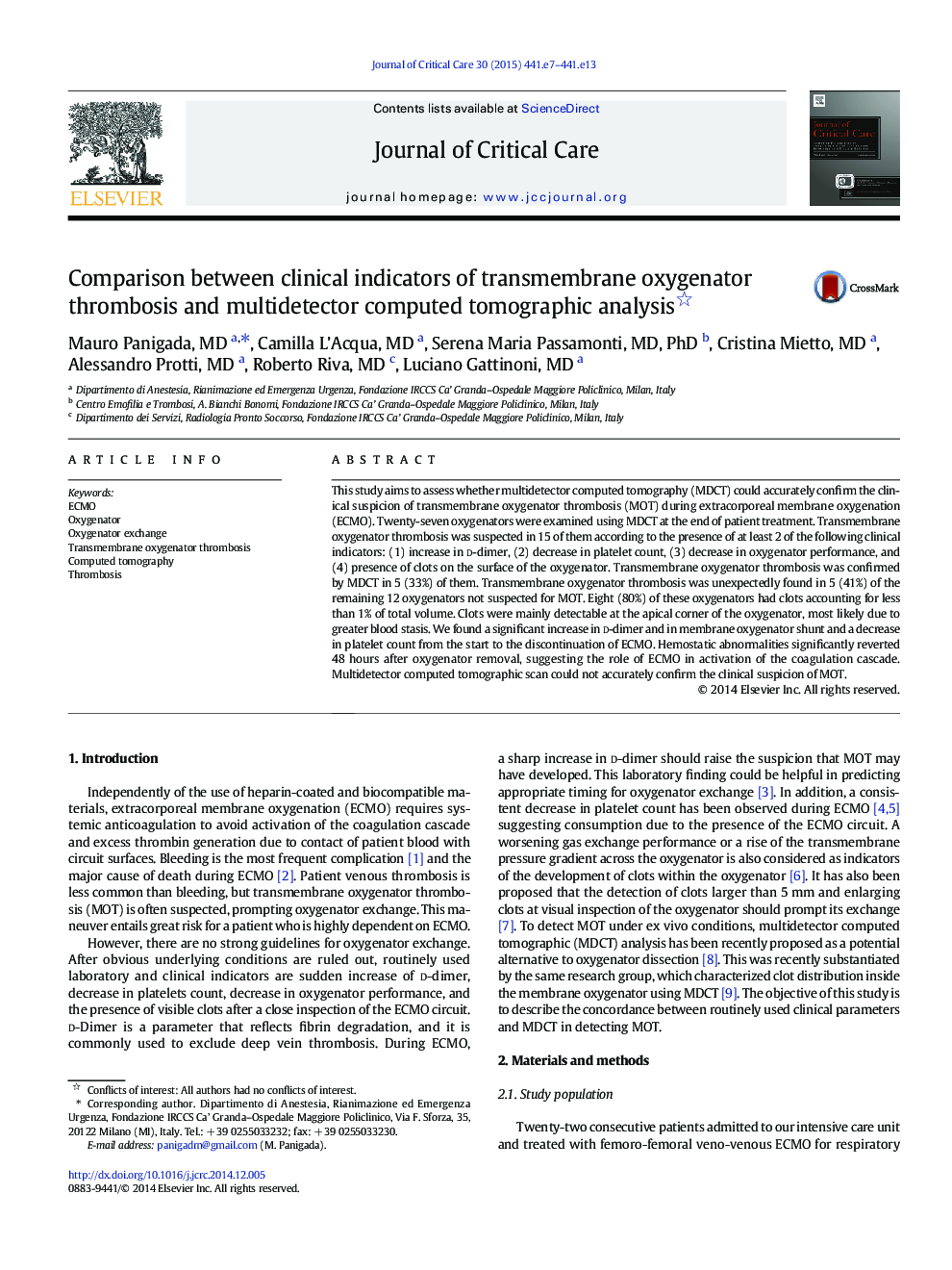| Article ID | Journal | Published Year | Pages | File Type |
|---|---|---|---|---|
| 5885563 | Journal of Critical Care | 2015 | 7 Pages |
This study aims to assess whether multidetector computed tomography (MDCT) could accurately confirm the clinical suspicion of transmembrane oxygenator thrombosis (MOT) during extracorporeal membrane oxygenation (ECMO). Twenty-seven oxygenators were examined using MDCT at the end of patient treatment. Transmembrane oxygenator thrombosis was suspected in 15 of them according to the presence of at least 2 of the following clinical indicators: (1) increase in d-dimer, (2) decrease in platelet count, (3) decrease in oxygenator performance, and (4) presence of clots on the surface of the oxygenator. Transmembrane oxygenator thrombosis was confirmed by MDCT in 5 (33%) of them. Transmembrane oxygenator thrombosis was unexpectedly found in 5 (41%) of the remaining 12 oxygenators not suspected for MOT. Eight (80%) of these oxygenators had clots accounting for less than 1% of total volume. Clots were mainly detectable at the apical corner of the oxygenator, most likely due to greater blood stasis. We found a significant increase in d-dimer and in membrane oxygenator shunt and a decrease in platelet count from the start to the discontinuation of ECMO. Hemostatic abnormalities significantly reverted 48 hours after oxygenator removal, suggesting the role of ECMO in activation of the coagulation cascade. Multidetector computed tomographic scan could not accurately confirm the clinical suspicion of MOT.
